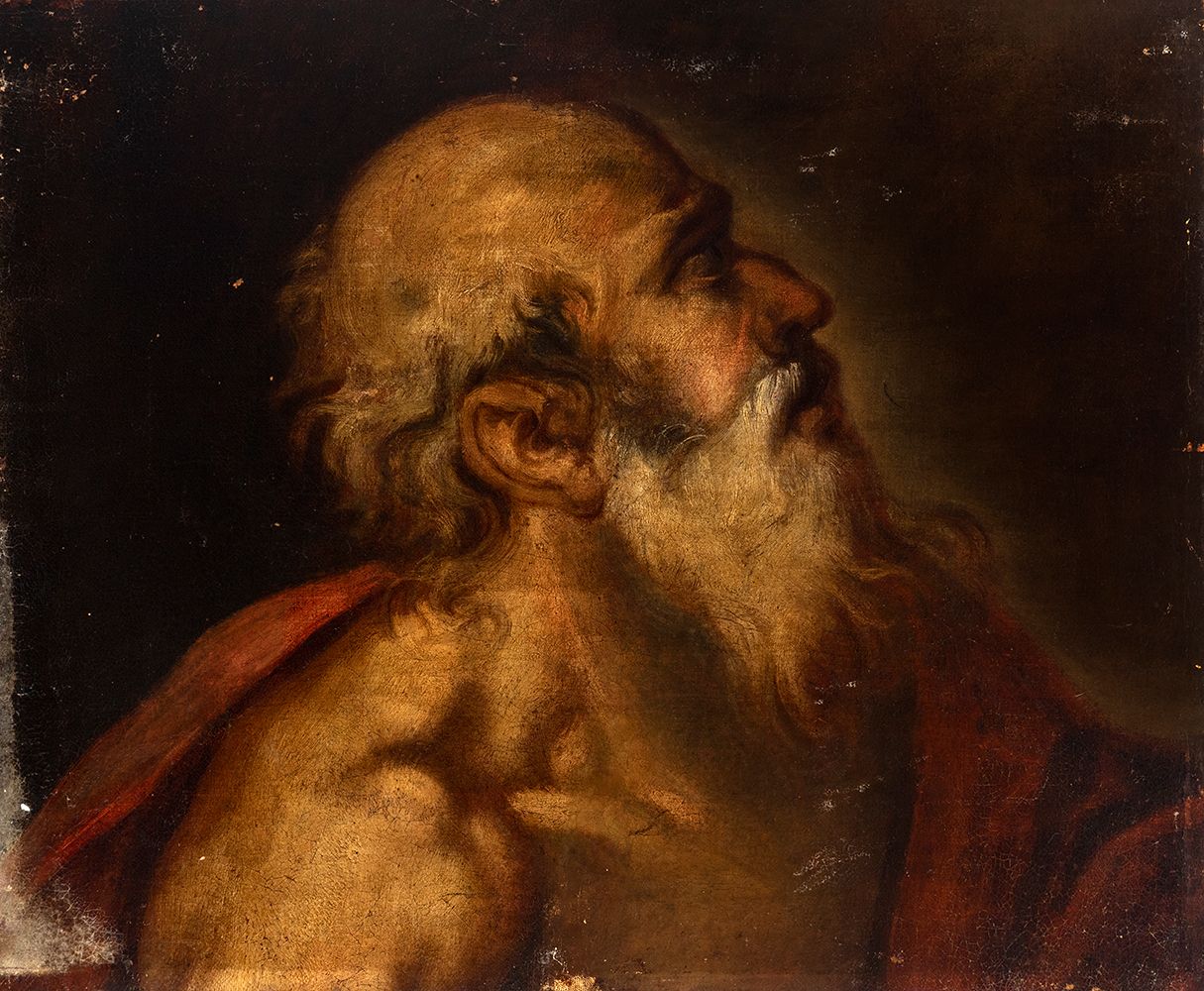Description
Spanish school; second half of the 17th century.
Spanish school; second half of the 17th century. "Saint Jerome". Oil on canvas. Relined. It presents repaintings, faults in the pictorial layer and damages caused by the humidity. Measurements: 46 x 57 cm. In this work, of devotional character both for its subject and for its composition, simple and clear, we are presented Saint Jerónimo during his penitence. The absolute protagonist of the image is the face of the saint, magnificently worked and endowed with a deep pathos. The saint is depicted half-length in the foreground, dressed in his frequent red cloak, set against a dark background, emerging from the semi-darkness. There are no iconographic attributes that complicate the reading or detract from the naturalism of the image, and in fact realism is basic to the composition, both in the lighting and in the representation of the objects and, especially, in the saint's anatomy. Far removed from any idealisation, this is an elderly body with a suffering face, endowed with great expressivity, which directs a lost, absent gaze towards the distance. One of the four great Doctors of the Latin Church, St Jerome was born near Aquileia (Italy) in 347. Trained in Rome, he was an accomplished rhetorician and polyglot. Baptised at the age of nineteen, between 375 and 378 he withdrew to the Syrian desert to lead an anchorite's life. He returned to Rome in 382 and became a collaborator of Pope Damasus. One of the most frequent representations of this saint is his penance in the desert. His attributes are the stone he uses to beat his chest and the skull on which he meditates. Also the cardinal's cape (or a red mantle), although he was never a cardinal, and the tamed lion. The latter comes from a story in the "Golden Legend", where it is narrated that one day, when he was explaining the Bible to the monks in his convent, he saw a lion limping towards him. He removed the thorn from its paw, and from then on he kept it in his service, instructing it to look after his donkey while it grazed. Some merchants stole the donkey, and the lion recovered it, returning it to the saint without hurting the animal.
6
Spanish school; second half of the 17th century.
